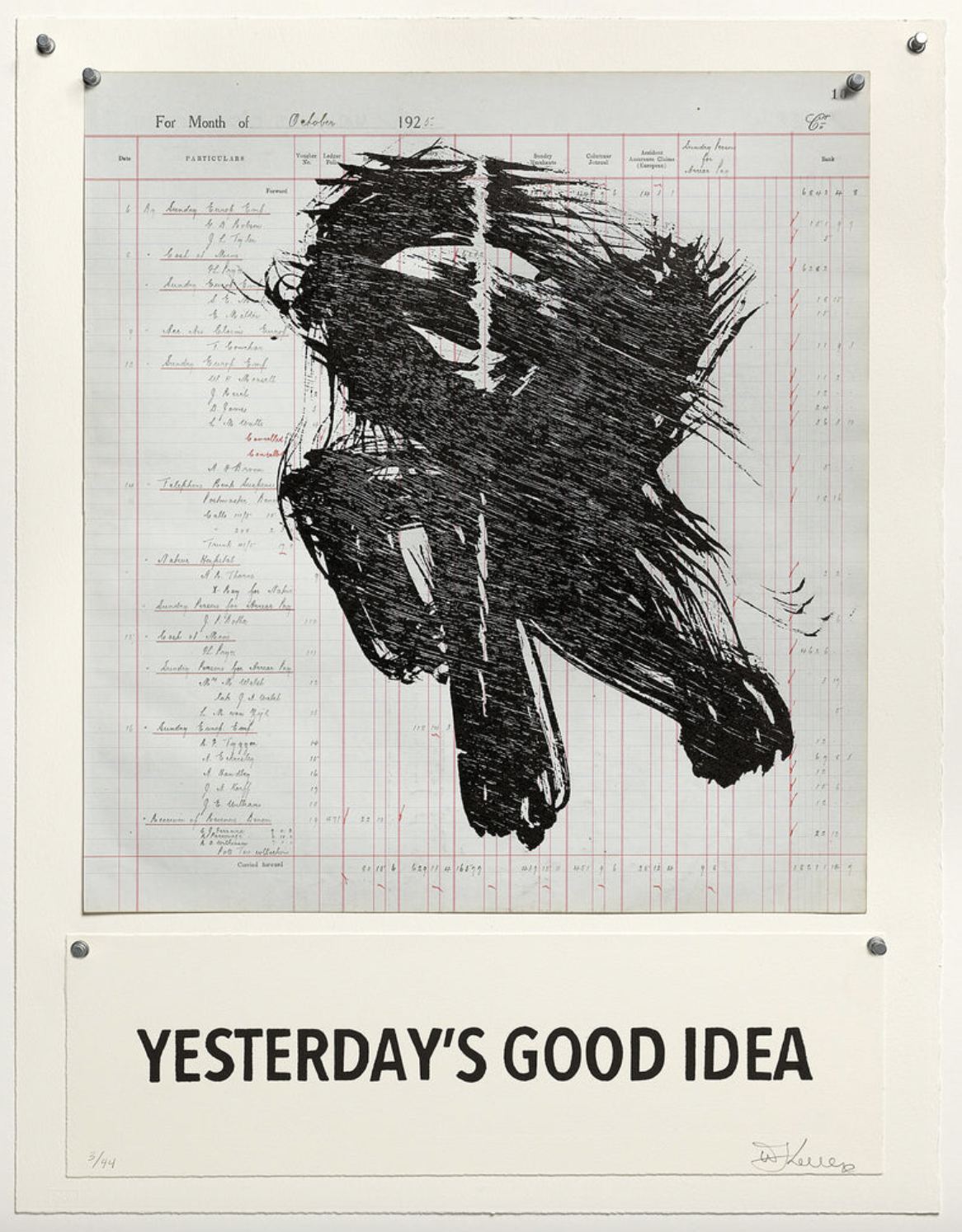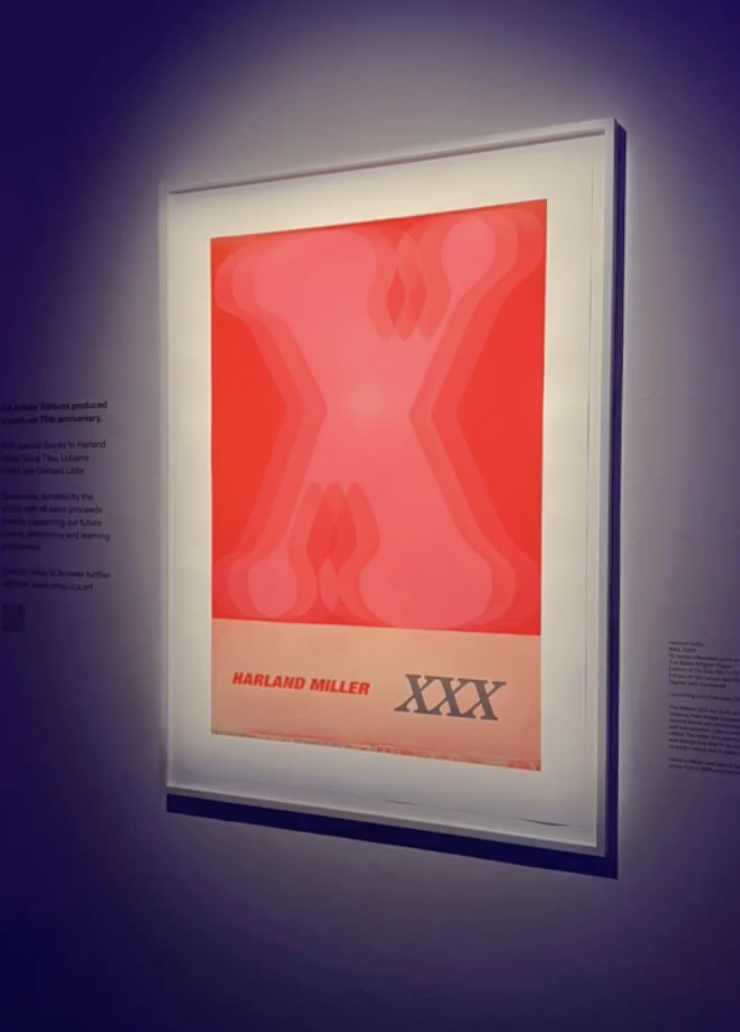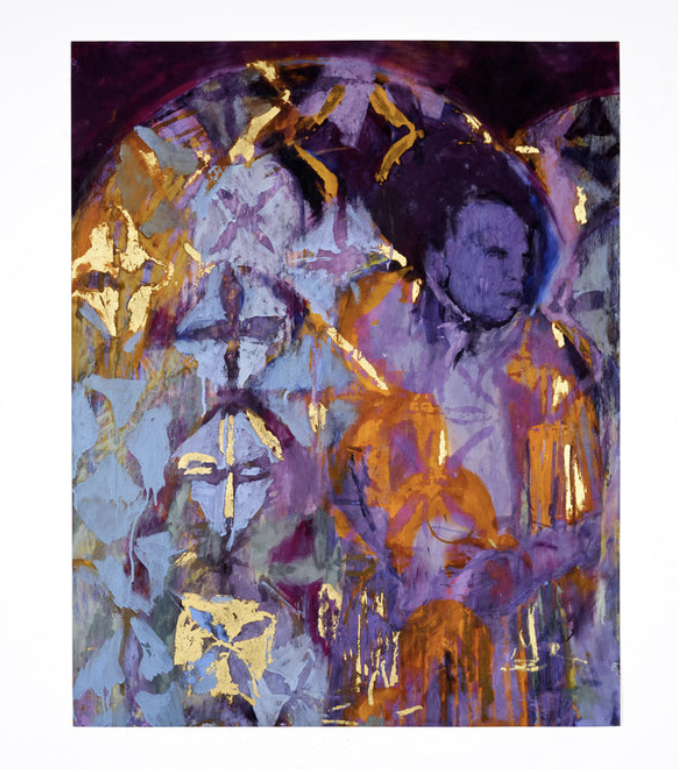What Is a Print?
A print is an original work of art created by transferring an image from a prepared surface — such as a plate, block, or stone — onto paper. Unlike reproductions, each print is made by hand under the artist’s control, and each impression carries subtle variations that make it unique. Yet, because these artworks exist on paper, they are inherently fragile and light-sensitive, requiring expert conservation framing to preserve them for the future.
Different printmaking methods bring distinct textures, surfaces, and vulnerabilities. here are some examples from Frame London’s partners at Whitechapel Editions, South London Gallery Editions, and ICA Editions:
Etching
Created by drawing through wax on a metal plate and biting lines with acid. The delicate incised lines hold fine ink detail, but the paper absorbs pressure from the press and is easily marked or dented. Conservation framing protects this soft, embossed surface from contact and environmental stress.
Image: Whitechapel Editions;
Andrew Pierre Hart
Bio-Data Flowed Rhythm (2024)
Etching, printed in three colours, using hard ground, aquatint and drypoint, on Somerset soft white velvet 300 gsm paper
36.3 x 27cm
Edition of 30, signed and numbered available through Whitechapel Editions and framed by Frame London
Aquatint
Builds tone and atmosphere through acid-bite on a grainy surface. These velvety areas of pigment can fade or discolour if exposed to light or acidic mounts. Museum-grade glazing and archival materials prevent these tonal subtleties from breaking down over time.
Image: Whitechapel Editions;
Gavin Jantjes
Succulent Night (2024)
Two plate aquatint etching in three colours, on Hahnemuhle copperplate white, 300gsm paper
40.3 x 52.8cm
Edition of 30, signed and numbered available from Whitechapel Editions and framed by Frame London
Drypoint & Engraving
The artist scratches directly into the plate, raising a burr that gives the printed line its characteristic softness. Because the burr creates slight texture on the paper’s surface, drypoints are especially vulnerable to abrasion and require careful spacing and support within the frame.
Image: South London Gallery;
Raqib Shaw
Carracci Bacchus, 2019
Etching a la poupée on 300gsm Somerset Satin White paper
43.5 x 52 cm
Edition of 50 with 10 AP’s available through South London Gallery and framed by Frame London
Lithography
Drawn with greasy crayon or ink on stone or metal, producing rich textures and layered colours. The inks can be highly light-sensitive, so UV-protective glazing and acid-free mounts are essential to preserve their intensity.
Image: Whitechapel Editions;
Andrew Cranston
a room remembered (2021)
5 colour lithograph, from 2 stones and 3 plates, onto Fabriano Artistico Natural 300gsm
45.5 x 38 cm [ 15 x 17.9 inches]
Edition of 35, signed and numbered available through Whitechapel Editions and Framed by Frame London
Woodcut & Linocut
Carved in relief and pressed onto paper, these prints often show strong texture and heavy ink layers that sit on the paper’s surface. Conservation mounting ensures these tactile surfaces never press directly against glass, avoiding sticking or flattening.
Image: Whitechapel Editions;
William Kentridge
Yesterday's Good Idea (2016)
Woodcut and collage with Ledger paper* and aluminium pins onto Somerset velvet 300gsm
65 x 50.5 cm [25.59 x 19.88 inches]
Variable edition of 44, signed and numbered available through Whitechapel Editions and framed by Frame London
Screenprint
Made by pushing ink through a fine mesh screen, often in bold colours. Screenprints are particularly vulnerable to humidity, heat, and poor adhesives that can distort the paper. Conservation framing provides the stable, acid-free environment these modern works need.
Image: ICA Edition:
Harland Miller XXX 2023
16 colour silkscreen print on Somerset Radiant White Tub Sized 410gsm Paper
96.7 × 70 cm
Edition of 75, signed and numbered
Available through the ICA and framed by Frame London
Digital Pigment Prints
A digital pigment print is a high-quality fine art print made using archival pigment-based inks and a digital printing process (usually an inkjet printer). It’s known for its rich colour, longevity, and detail — commonly used for limited edition artworks and photographic prints.
Image: South London Gallery;
Christina Kimeze
ARCHES, 2025
Digital pigment print, Hahnemuhle Photo Rag 308gm
Finished with 23.75 carat gold leaf
Available through the South London gallery and framed by Frame London
At FRAME London, every print is treated as a work of art deserving the same care as a museum collection. Our framers use only reversible, archival techniques — from handmade Japanese paper hinges and starch paste adhesives, to acid-free mounts and UV-protective glazing — ensuring the artwork remains secure, supported, and entirely unaltered.
Each frame is handcrafted in our London workshop, where design precision meets conservation craftsmanship. Whether it’s a centuries-old etching or a contemporary screenprint, FRAME London preserves not just how your artwork looks today — but how it will endure for generations to come. If you have a print you would like framed - don’t hesitate to contact us today!

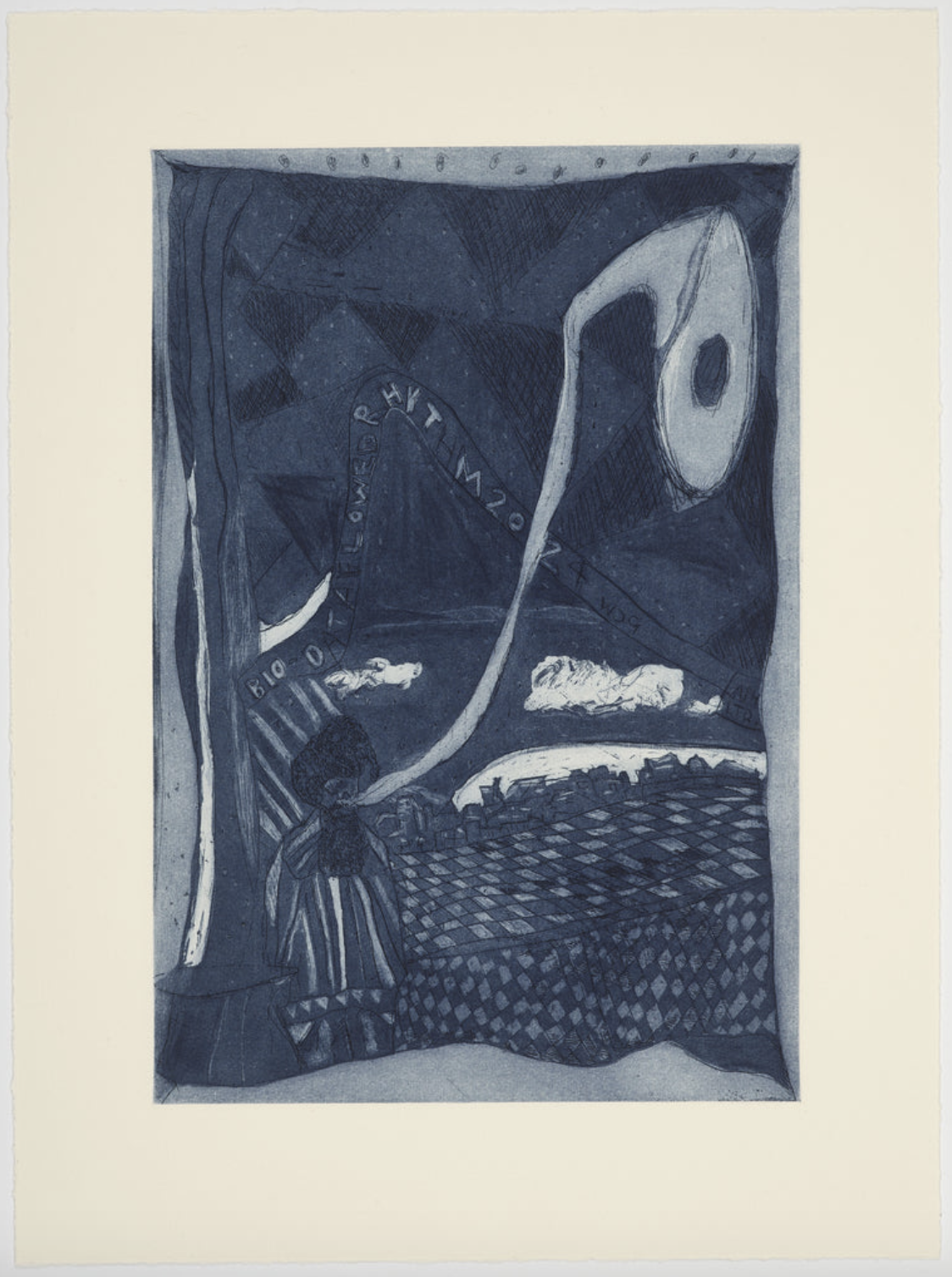
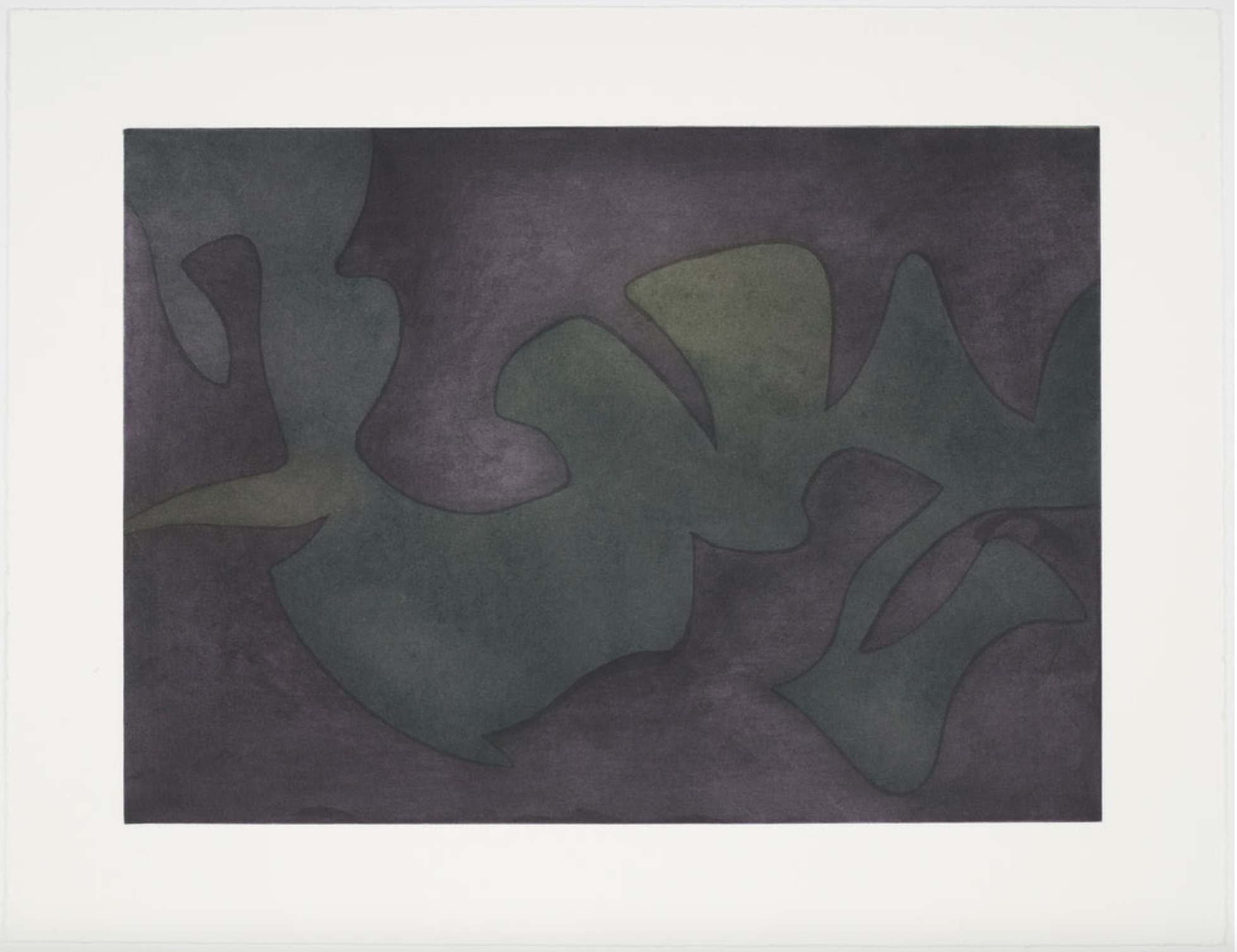
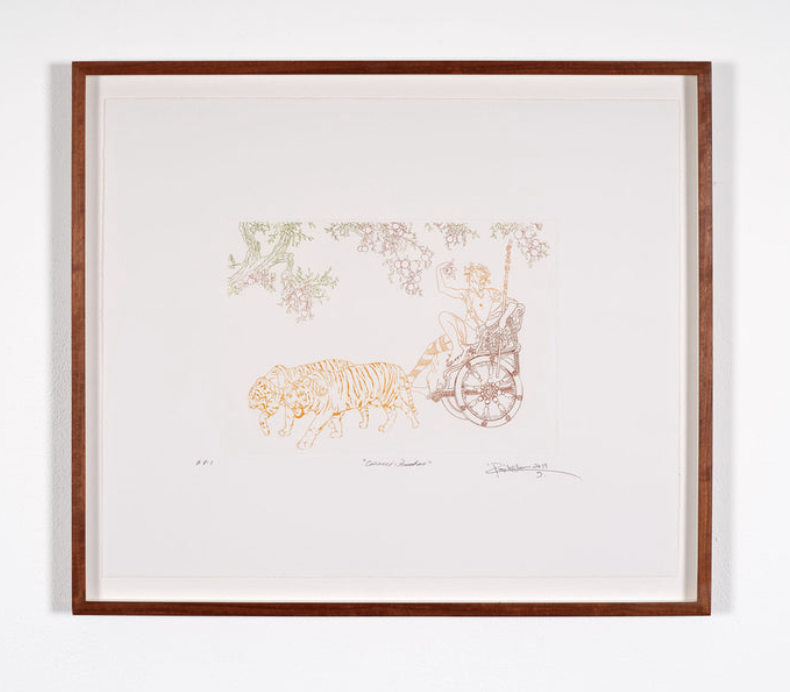
![Image: Whitechapel Editions; Andrew Cranston a room remembered (2021) 5 colour lithograph, from 2 stones and 3 plates, onto Fabriano Artistico Natural 300gsm45.5 x 38 cm [ 15 x 17.9 inches] Edition of 35, signed and numbered.](https://images.squarespace-cdn.com/content/v1/5be95674b40b9d96676a7b50/b524a705-5a7a-47c5-9aef-20e81a7e0d77/Image%3A+Whitechapel+Editions%3B+Andrew+Cranston+a+room+remembered+%282021%29)
